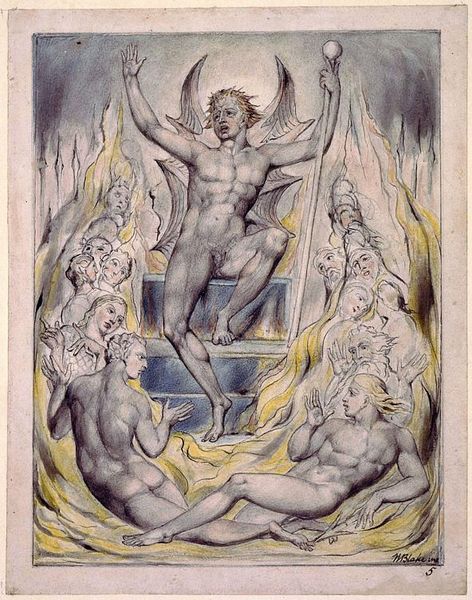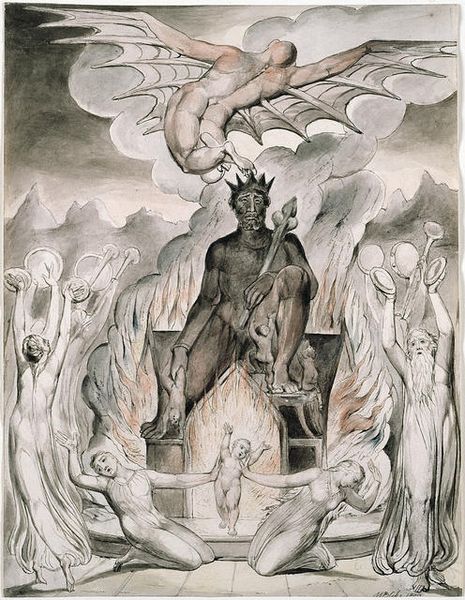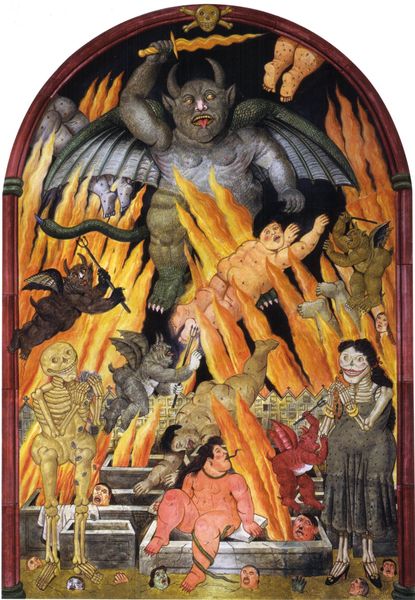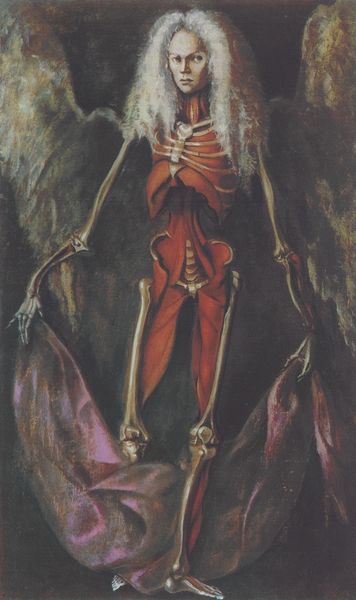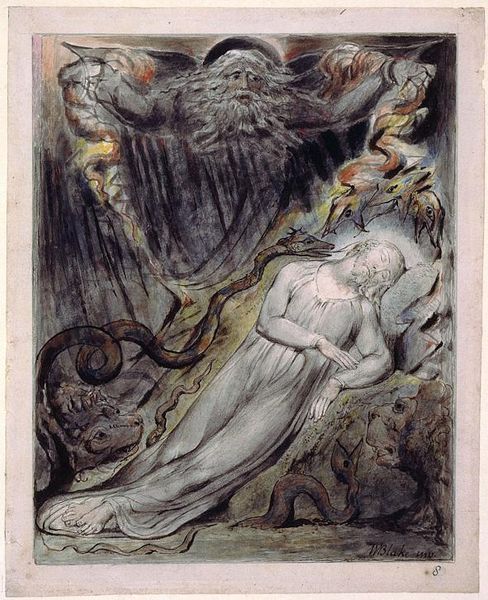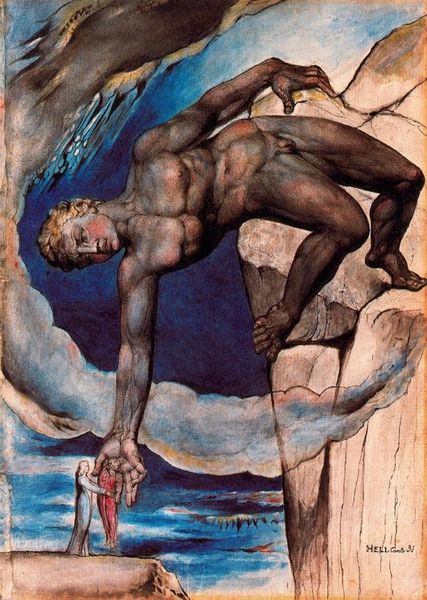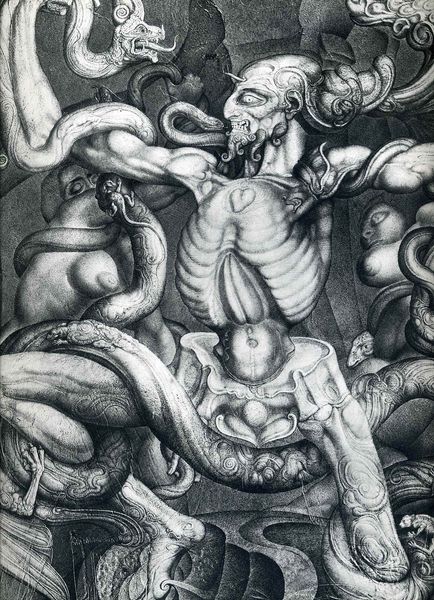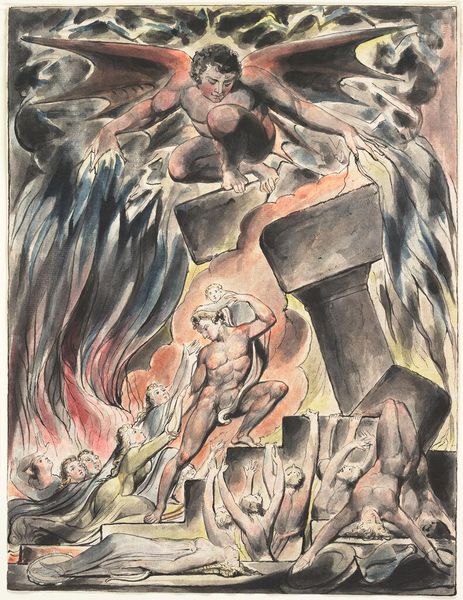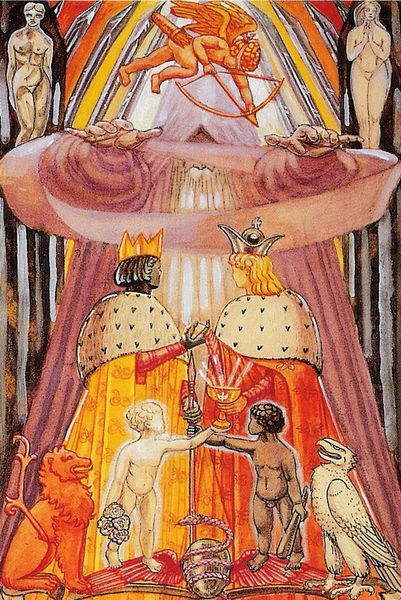
painting, oil-paint
#
allegory
#
narrative-art
#
painting
#
oil-paint
#
figuration
#
surrealism
#
genre-painting
#
history-painting
#
northern-renaissance
Dimensions: 22 x 14 cm
Copyright: Public domain
Editor: This oil painting, “Hell,” from 1485, by Hans Memling, just sends chills down my spine. It’s a pretty terrifying scene with demons and suffering figures engulfed in flames. What do you see in this piece? Curator: I see a profound statement about cultural anxieties surrounding sin and redemption in the late 15th century. The symbolism is incredibly dense. Consider the grotesque imagery of the demon, its body pieced together from disparate human and animal forms. Doesn’t that mirror the fear of moral decay and the fragmentation of the self when divorced from faith? Editor: That's a chilling perspective. I had mainly focused on the literal depiction of suffering, but the fragmentation as a metaphor makes sense. The banner overhead reading, "In inferno nulla est redemptio," reinforces that sense of inescapable doom, right? Curator: Precisely. And note the landscape itself – or rather, the anti-landscape. Jagged rocks, monstrous figures lurking at the edges, the all-consuming fire…It’s a deliberate inversion of the idealized landscapes that were becoming popular in Renaissance art. This underscores hell as the ultimate place of disorder and chaos, devoid of divine beauty. Editor: So it's not just a depiction of hell, but a warning against straying from religious principles? Curator: Exactly. It's visual rhetoric, aiming to inspire repentance by showcasing the horrifying alternative. Memling taps into deep-seated fears and hopes, manipulating symbols to deliver a powerful message. Editor: That makes the work feel more complex than just a scary painting. I didn't appreciate the careful construction of the imagery before. Curator: Recognizing the symbols unlocks so much meaning. The painting acts as a mirror reflecting the spiritual condition of its audience.
Comments
No comments
Be the first to comment and join the conversation on the ultimate creative platform.

